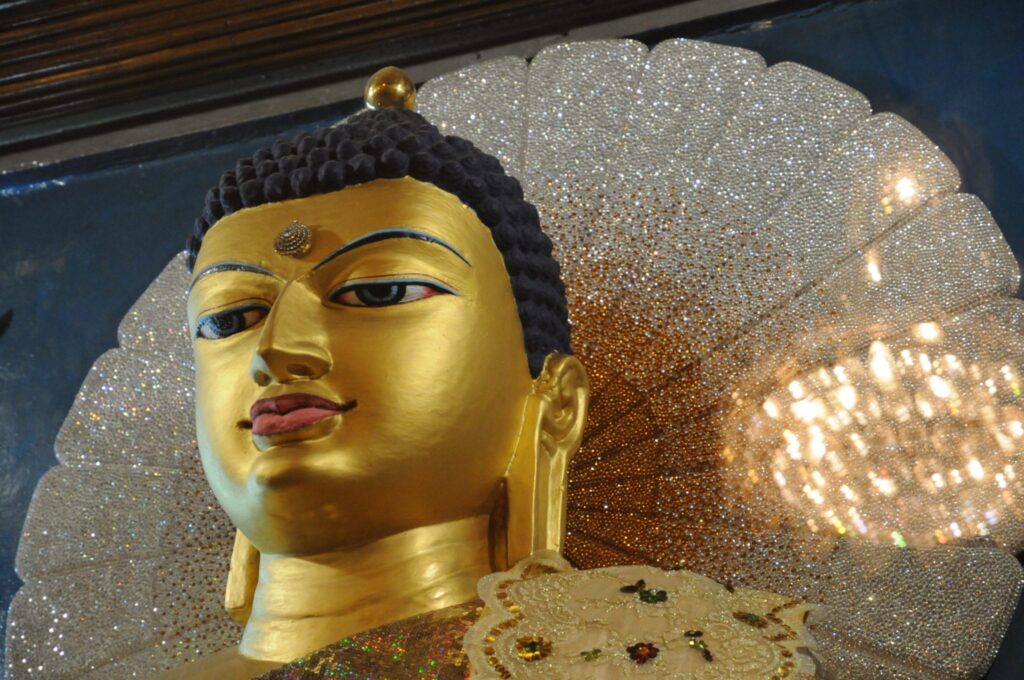
Visualization can seem unnecessarily complicated when we first encounter meditation instruction. But creating a mental image and using that as an object of our attention is an important technique on the Vajrayāna path. Here, Phakchok Rinpoche shares some brief instruction on how to incorporate visualization practice into your daily meditation. Rinpoche helps us understand how we can use visualization as we practice both śamatha (calm-abiding) meditation and vipaśyanā (clear seeing) meditation. (We know the audio recording is a bit choppy in places, but we feel the message is important.)
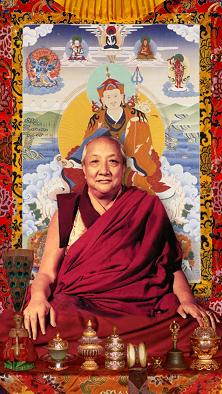
Rinpoche here bases his instruction on the late Dilgo Khyentse Rinpoche’s advice entitled, The Sage Who Dispels the Mind’s Anguish. Please take some time to study this precious text that gives very clear guidelines on how to practice meditation. This text serves as an important reference throughout your practice–return to it frequently as you gain more experience to see how you gain more insight.
When you start practicing with Buddha Śākyamuni , you concentrate on his physical form. And that all depends on how you perceive him. Different students see different forms. But according to the texts most of the Buddha’s students saw him in one way. The Buddha’s physical form displays 32 major qualities, or marks. Additionally, texts list 80 minor qualities. These specific attributes were then used by artists to create likenesses of the Buddha in sculpture or in paint.
Visualization: Begin Using an Image
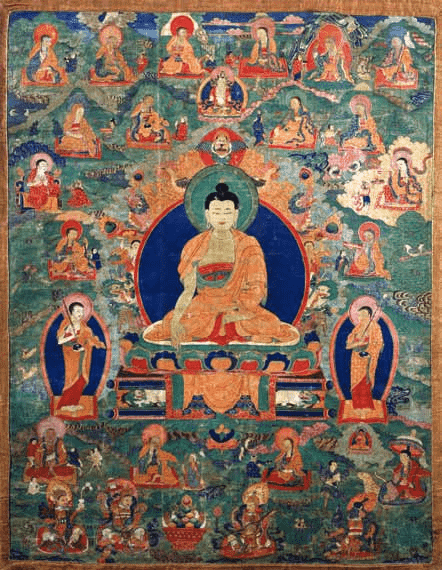
So first, start by using a statue or a picture of the Buddha for your meditation. Later on, as you gain proficiency in holding your attention, you imagine this statue becomes smaller and smaller and then disappears.
But as we begin, we can try to visualize the Buddha just as the picture or statue that is in front of us. We place the image at a level that is comfortable to look at repeatedly. But understand that when we focus on the picture, it is not only a picture – we view the image as the real Buddha Śākyamuni in front of you. This is a key point. It is very important that whatever support object we use–a statue, or a painting, or a photo–whatever we visualize, we regard it as the real Buddha Śākyamuni in front of us. He is neither two-dimensional like a photo, nor solid like a stone or metal image.
In the text, Dilgo Khyentse talks about how one can first focus on the Buddha in totality. But then we can also shift our attention to focus on different areas of Śākyamuni Buddha’s form. Each of these foci has a different purpose. If we want to be blissful, and pacify dullness we can focus on the clear light above his head.
Or we could focus on three lines at the Buddha’s throat. And in his heart center, we can visualize the endless knot–this helps reduce agitation and stabilizes our meditation. Another focus is between his eyebrows where there is a white hair that coils to the right.
All of these visualizations belong to the category of śamatha meditation. Our attention focuses one-pointedly on a virtuous object.
Visualization in Vipaśyanā: Examining How the Mind Functions
When we practice vipaśyanā meditation, we do not simply rest the mind. Instead, we begin to examine how the mind functions. Where is the Buddha? First, we can imagine the Buddha’s figure becoming smaller and smaller. It becomes very subtle until it becomes the size of a sesame seed. Then we allow the image to disappear completely– and then we relax. The second practice is to just let be. This is very easy–it is actually much easier than the previous focus. But this process is how you master the mind.
The text talks about emptiness meditation. When focusing on Buddha Śākyamuni, ask serious questions–where is he? Is he in our head, or outside it? Maybe he is to the left of us? Where is he? Is his hand Śākyamuni Buddha, or is his leg or his shoulder?
Yet, when we try to find him, we cannot. And similarly, when we look at ourselves and our body– who are we really? Again, we are not going to find anything, just like with Buddha Śākyamuni. His essence is emptiness and likewise, our essence is emptiness. After analyzing like this, you let go and rest in the natural state. And that is the beginning of vipaśyanā meditation.
Note: As we progress along the path we will encounter the terms śamatha (calm-abiding) meditation and vipaśyanā (clear seeing) used in different contexts. The meanings become progressively more subtle. But, as we begin our meditation practice, the above description may be helpful!


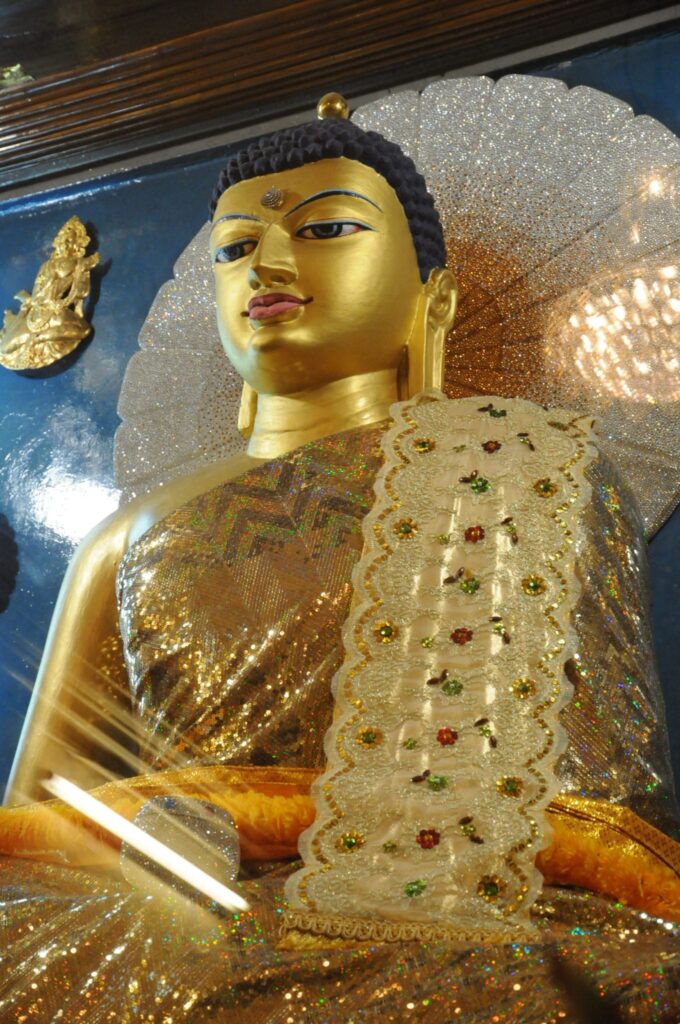

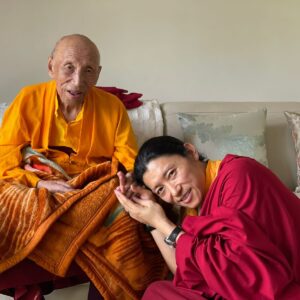
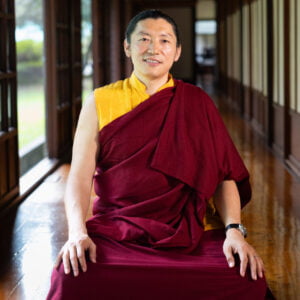
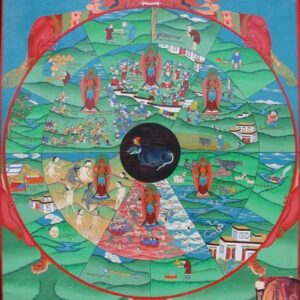



Responses